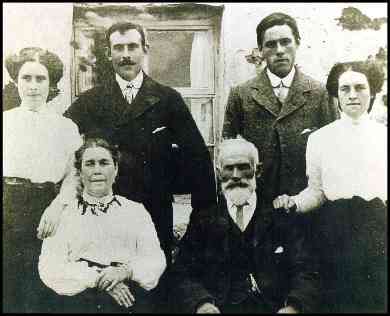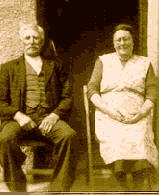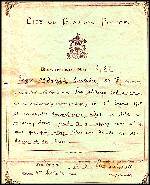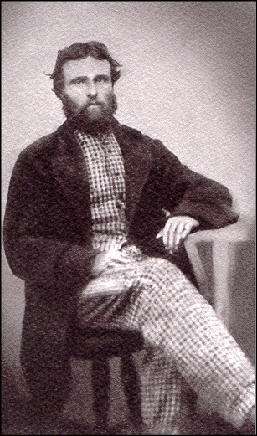Angus
MacAulay
Angus MacAulay (Aonghas Sheorais) was born at Pennilodden
and emigrated to New Zealand when he was 50 years of age. His father taught
him the basics of piping from the age of 10 but he later received lessons
from Pipe Major William Lawrie. After the First World War ended, Angus joined
the Lovat Scouts as a piper, under Pipe Major William Ross and subsequently,
he became a Pipe Major.
In competitions he was hard to beat and records show that in 1925 and in each
of the nine succeeding years Angus won the medal for the highest points in
all events at the South Uist and Barra games. During this time (1926-1935)
he studied piobaireachd with Pipe Major John MacDonald of Inverness and his
competition results in the early 1930s regularly included the
gold medal at Inverness and Oban.
|
Angus
MacAulay, |


|
Ruaridh
Mac Gilleasbaig Mac Dhomnaill Ruaidh and his wife Mairi Nighean Ruairidh
Aonghais Nic Challuim |

COGADH AFRICA
The Boer War ended 100 years ago in April 1902. This was the first war where the Lovat Scouts, which later feature so much in Uist history, first saw active service. Yeomanry regiments made up of estate workers were formed into volunteer companies. Research from other journals and diaries kept by soldiers during this time show a call for volunteers followed by a training period of one month. It was customary to sign up for one year and then the survivors would return to be replaced by another unit of volunteers. Our members’ archives have a few choice documents relating to this historic time. One of these is a translation of a letter found on a Boer soldier's body, dated Ladysmith, Natal, 7.12.1899, after the blowing up of “Long Tom”. Long Tom was the gun used by the Boers to besiege Ladysmith. The letter is written to a sister: “It is one month and seven days since we besieged Ladysmith and don't know what will happen further. The Englishmen we see every day walking in the town, and we are bombarding the town every day with our Cannons. They have erected plenty of breastworks outside the town........I think there will be much blood spilt before they surrender.” We also have original issues of the “Ladysmith Lyre” a newsletter written by the besieged troops, and from an issue dated 5 December 1899 an official account of the fight at Modder River: ......


John William Black
John William Black 111, referred to in our history society as “the Texas Judge”, from Brownsville, Texas supplied the photograph of his great grandfather John William Black and the following information. John William Black was born in 1832 in Benbecula. He was the son of Donald Alexander Black and Mary Gillis. Donald, his brother Ranald and their families emigrated to Grand Mira, Cape Breton circa 1841 from Uachdar. The photograph of John was taken at the time of his marriage to Mary Fitzgerald. Four of their eight children were born in Nova Scotia where he worked as a carpenter in the wooden ship building trade. The family moved to Boston in the early 1870’s and he became a US citizen in 1887. The earliest Black known to the descendants on Benbecula was John Black from Torlum who married Mary Wilson and had 10 children. The Black surname was common in Benbecula in the late 1700’s up to the mid 1800’s and records show Blacks in Torlum, Balivanich, Griminish and Kyles Flodda. From 1840 whole families with the name Black emigrated to Canada.